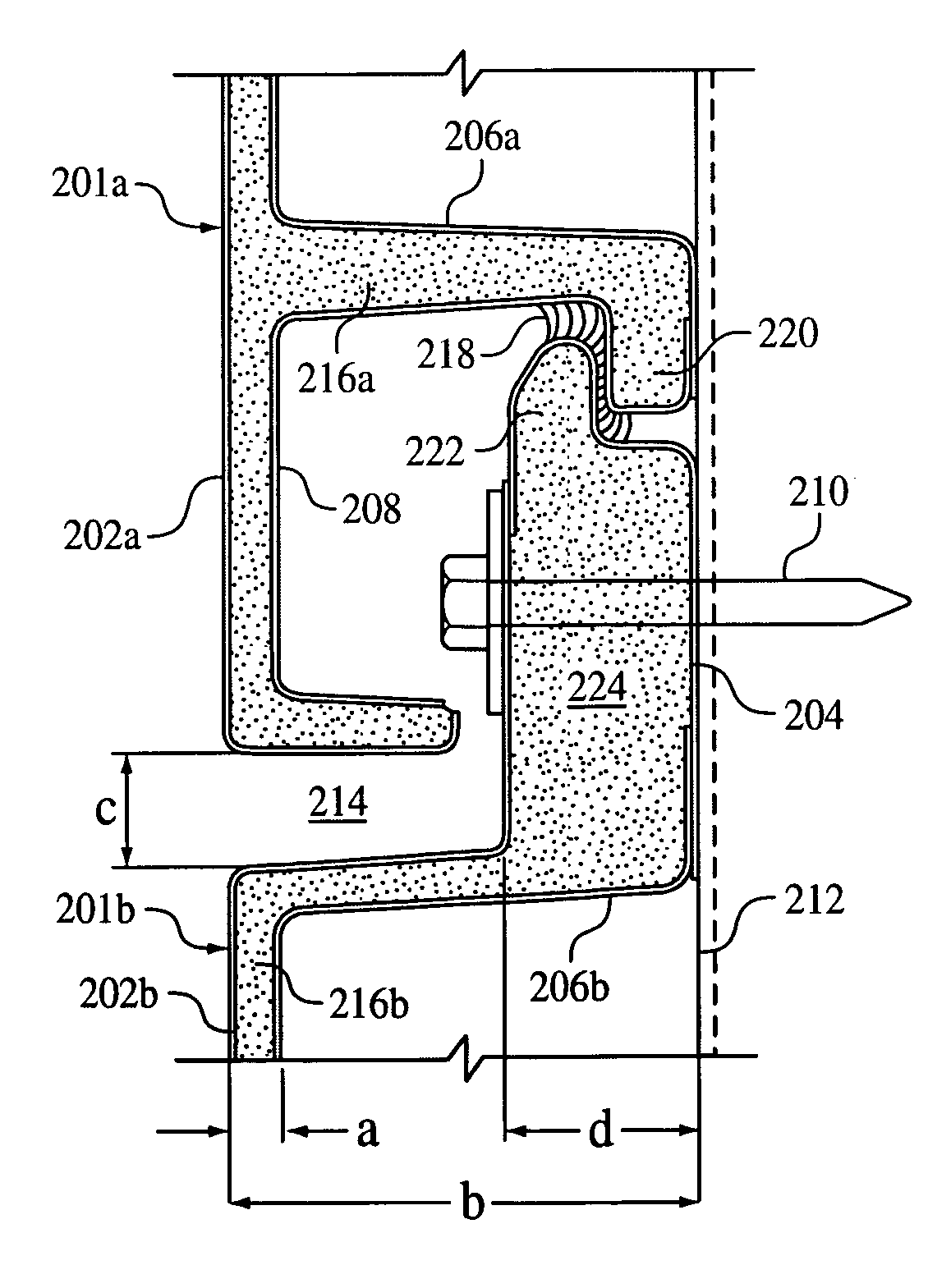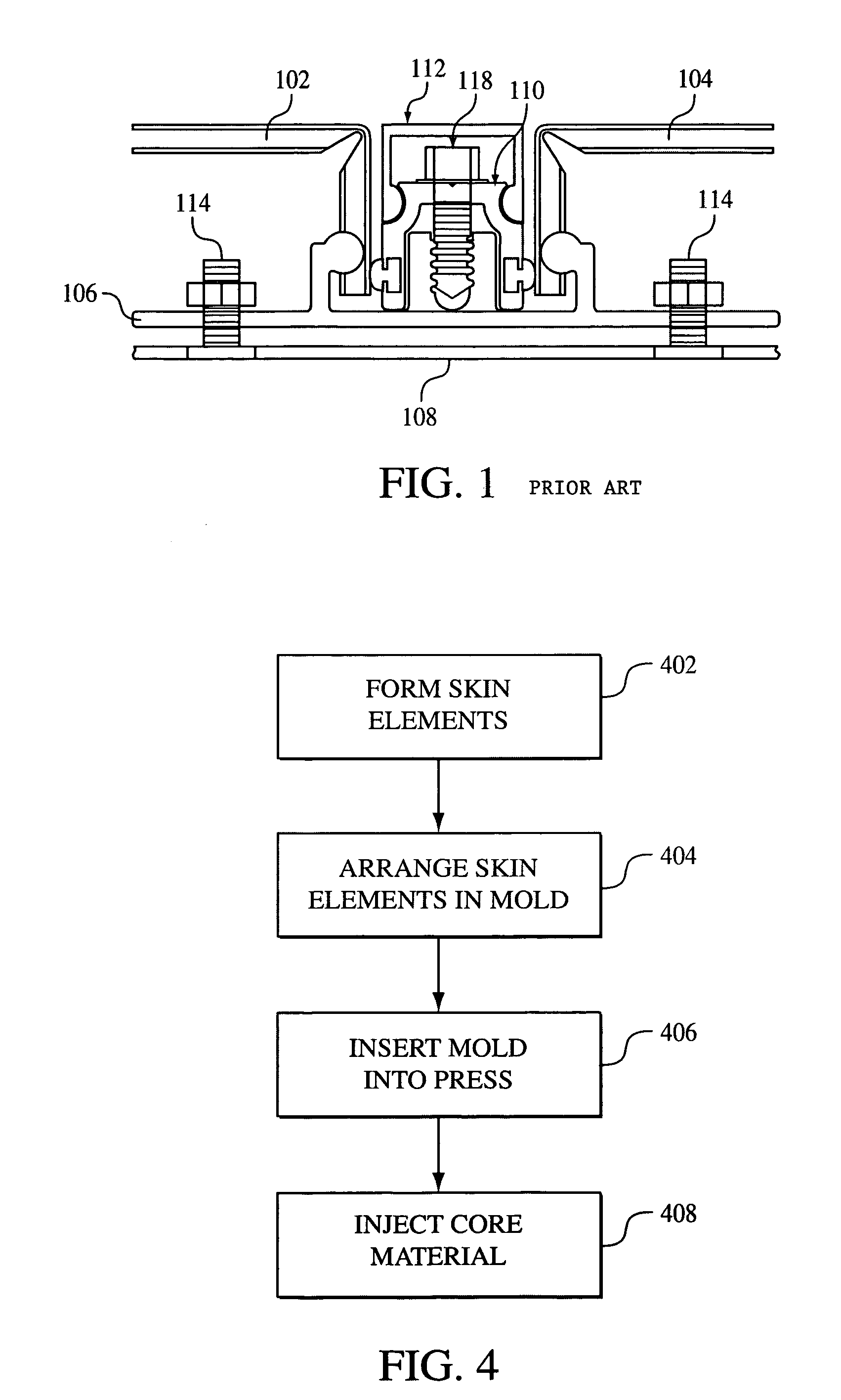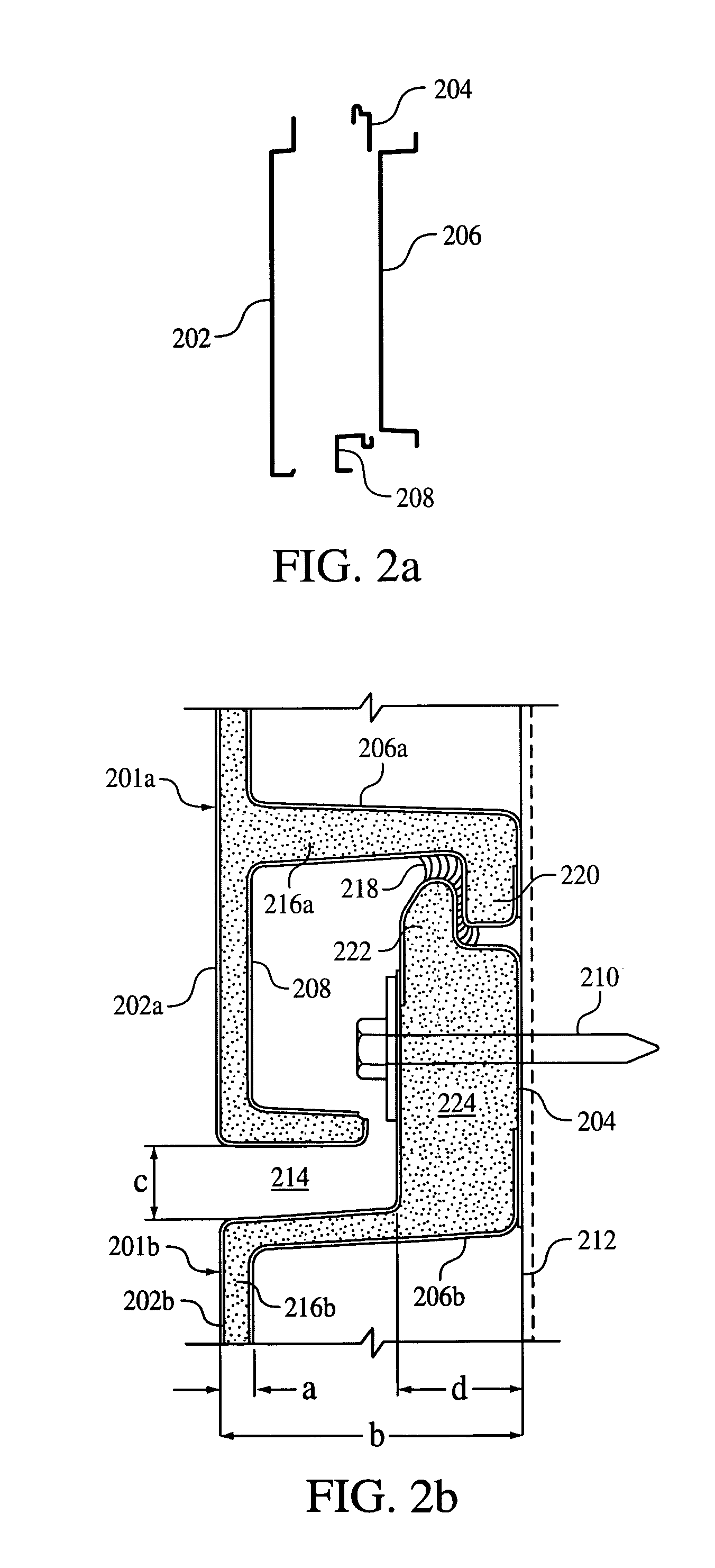Features for thin composite architectural panels
a composite architectural panel and composite technology, applied in special buildings, parkings, walls, etc., can solve the problems of manufacturing limitations, prone to represent rather cumbersome and costly processes, and manufacturing costs, and achieve the effect of altering coloring or other visual features
- Summary
- Abstract
- Description
- Claims
- Application Information
AI Technical Summary
Benefits of technology
Problems solved by technology
Method used
Image
Examples
Embodiment Construction
[0022]As touched upon heretofore, thin composite architectural panels, also known as thin composite wall panels, are recognized in the art as normally encompassing a laminated composite including a polymeric or foam core sandwiched between two laminates, e.g., metal skins.
[0023]Conventionally, sheets of a thin composite are fabricated by cutting them to size and bending their ends at right angles via routing. The panels are typically adjoined to one another, between bent ends, via extruded joining mechanisms. Shown in FIG. 1 is such a conventional arrangement. As shown, two bent vertical thin composite panels 102 and 104 are joined at a vertical joint via an extruded connector indicated at 106. (The relatively small thickness dimension of the panels 102 and 104 is to be noted, as starkly opposed to “thick” building panels whose thickness may extend, e.g., all the way back to a building structure as indicated at 108.) Other components that may typically be provided include a pressure...
PUM
 Login to View More
Login to View More Abstract
Description
Claims
Application Information
 Login to View More
Login to View More - R&D
- Intellectual Property
- Life Sciences
- Materials
- Tech Scout
- Unparalleled Data Quality
- Higher Quality Content
- 60% Fewer Hallucinations
Browse by: Latest US Patents, China's latest patents, Technical Efficacy Thesaurus, Application Domain, Technology Topic, Popular Technical Reports.
© 2025 PatSnap. All rights reserved.Legal|Privacy policy|Modern Slavery Act Transparency Statement|Sitemap|About US| Contact US: help@patsnap.com



